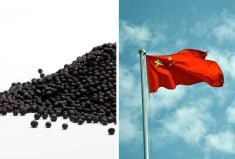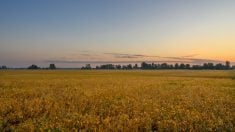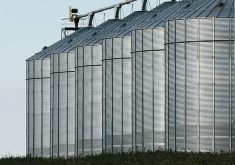WINNIPEG, Manitoba (Reuters) — Light rains sprinkled Western Canada’s crops and pastures during the weekend, but amounts fell well short of what is needed to remedy dry conditions that have stunted growth, analysts said on Monday.
Rains were scattered across the Prairies and similar light amounts are expected during the next two weeks, Commodity Weather Group said in a research note on Monday. But concerns remain for the region’s spring wheat and canola due to a longer-term forecast for warm and dry weather, it added.
Canada is the world’s biggest canola exporter and second-largest wheat shipper.
Read Also

Canada, Mexico look beyond U.S. as agri-food trade pact expands
Earlier this week Heath MacDonald, Canada’s Minister of Agriculture and Agri-Food and Mexico’s Secretary of Agriculture and Rural Development, Julio Berdegué, met to discuss bilateral relations and strengthen cooperation and trade ties between the two countries.
John Guelly received 7.6 millimetres of rain on his canola and wheat farm near Westlock, Alberta, north of Edmonton. It was not much, but the most precipitation his farm has collected since snow on May 5.
“Welcome moisture, but only a Band-Aid,” he said. “Need more soon. Crops (are) hanging in.”
Further south near Bow Island, Alberta, Gerard Oosterhuis said the two millimetres his farm received during the weekend still left his durum in trouble and canola looking like “a disaster.”
“We need rain real bad,” he added.
Most of Saskatchewan and Alberta, the two biggest canola- and wheat-growing provinces, had received less than 40 percent of average precipitation in the past month as of June 9, according to Agriculture Canada.
In Alberta, canola fields look patchy, with fewer plants per square foot than usual, and some seed has yet to germinate due to dry soil, said Neil Whatley, a crop specialist for the provincial government.
ICE Canada November canola futures dipped in choppy early trading on Monday.
The rain in Alberta, Canada’s biggest cattle-producing province, provided ample moisture for some hay crops and pastures, but left others in “desperate” shape, said Brian Perillat, manager of Canfax, the market analysis division of Canadian Cattlemen’s Association.
Limited cattle feed supplies have caused ranchers to sell more cow-calf pairs, causing the price to fall as much as $1,000 per pair since early spring to $3,000 to $3,500, he said.
Dry Canadian conditions have had little impact on Chicago live cattle futures, Perillat said. Texas and Oklahoma pastures have had torrential rains after years of drought.
Duane Karcha, who buys grain and legume crops at Preeceville, Saskatchewan, to supply the hog farm division of Canadian pork processor Olymel, said recently seeded crops are emerging but look likely to mature late.














